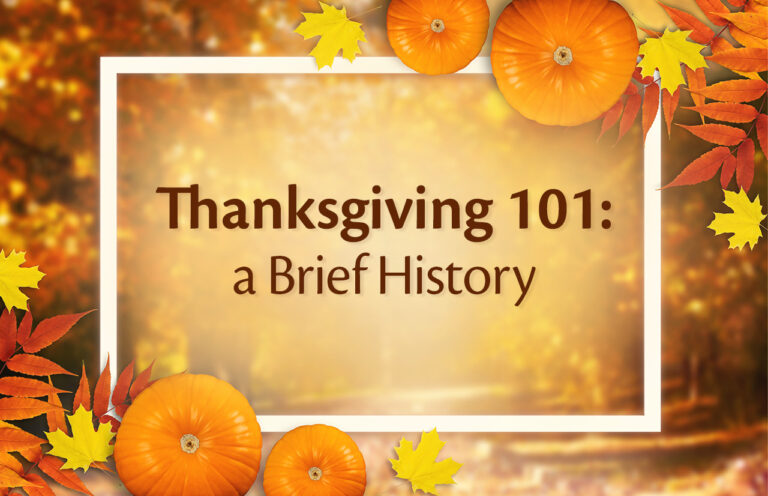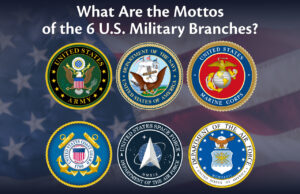Thanksgiving is probably the most family-centric holiday celebrated in the United States. Even aside from its fascinating origin and history, it has come to be recognized as an annual gathering of family and friends and a time to show gratitude for all the blessings of the year. That’s probably why the day before Thanksgiving is considered the busiest travel day. Have you ever tried to catch a plane that Wednesday? Or even hit the highway for a road trip? Everyone is in the process of meeting up and coming together for one big meal – the culmination of the Thanksgiving holiday.
But there is so much more to the day that occurs on the 4th Thursday of every November. Even more than you might pick up from that perennial TV special or the jumble of facts from your third grade history book. Of course, personally, we all have our favorite things that we look forward to every year and those fond memories of Thanksgivings past. But since the big day is nearly upon us – November 24 this year, to be exact – we thought it might be fun to take a look at that very first “Turkey Day” long ago in Plymouth, Massachusetts, and some of the ways the holiday has changed over the years.
When Was the First Thanksgiving?
According to most historians the very first official Thanksgiving happened in 1621 in Plymouth, Massachusetts. The settlers of the Plymouth Plantation, often called Pilgrims, held a sizable feast to celebrate the bounty of their pre-winter harvest. They enjoyed this meal of thanks alongside members of the Wampanoag tribe, the Native Americans who had lived there before the settlement. The event lasted 3 days. That’s quite a feast! Wonder if there were any leftovers.
Over the years, some have disputed this as the actual date for the first Thanksgiving. Most notably Florida historians who claim that the inaugural event occurred over 50 years earlier (1565) and far away from the New England colonies. According to History.com, this record acknowledges the arrival of Spanish Admiral Don Pedro Menedez de Aviles and 800 colonists to St. Augustine, Florida as a precursor to the first Thanksgiving. To give thanks for their safe landing and the bounty of this new land, they held a Catholic mass and invited the local tribe of Timucuans to partake in a communal meal together. While this event is documented, the one in Plymouth is the most well-known historically.
Thanksgiving Through the Years
While the influence and reputation of that day in 1621 continued to encourage annual autumn harvest feasts, especially among those in the individual colonies and states, Thanksgiving didn’t become a national holiday until 1863. But the history can be a bit confusing.
The first U.S. President, George Washington, proclaimed a day of Thanksgiving on November 26, 1789. It happened to be a Thursday but was never made “official”. It wasn’t until Abraham Lincoln declared that the event would be held on the last Thursday in November that it was instated as an official holiday. Years later, there was another subtle change.
In 1939, President Franklin D. Roosevelt mistakenly signed a bill into law changing the date of Thanksgiving to November 23. This caused many to be upset, with some Americans refusing to acknowledge the change, but Roosevelt stuck to his guns and maintained his error for the next few years. Finally, in 1941 the President admitted his mistake and signed a new bill into law making Thanksgiving on the fourth Thursday in November.
Traditions and Rituals of Thanksgiving
There are many Thanksgiving traditions in the United States, some of which have been observed from the very beginning – the basic ritual of giving thanks over a celebratory meal – and some that have evolved over the years – like the viewing of the annual Macy’s Day Parade in New York City. Here are some of the most popular U.S. traditions enjoyed on or around Turkey Day.
1. Travel – as mentioned before, because often many of our family members and loved ones live in different cities, Thanksgiving gatherings necessitate much travel so that everyone can be together.
2. Football – it just so happens that many big gridiron matchups are scheduled for Thanksgiving Day and the following long weekend. This gives football fans an opportunity to bond while waiting for the turkey to be done.
3. Black Friday – the Friday after Thanksgiving is historically known as Black Friday, noting the time in the fiscal calendar when most businesses move into the black. It is the unofficial start of Christmas shopping season for many, and this encourages customers to wake up early from their turkey coma with the hope of snagging deals.
4. Thankfulness – some take a moment – usually around the dinner table – to acknowledge the things they are thankful for in the present year. This ritual is observed by many as an opportunity to bring meaning to the day and recognize the history behind the Thanksgiving holiday.
5. Parades – The very first Macy’s Day Parade took place in 1924 and almost a century later, viewing of its annual TV broadcast is a beloved ritual for many families. In fact, the popularity of the parade has encouraged cities all around the U.S. to hold their own Thanksgiving parades, which are usually packed out with locals.
6. Turkey Pardon – the annual turkey pardon is an interesting practice that came from the White House. It is disputed as to which U.S. President was the first one to grant clemency to a turkey, saving him from America’s dinner table but somehow the tradition held. Each year, a small ceremony is televised from the White House grounds and features the current President and one lucky bird.
Speaking of turkey… did you ever wonder where the tradition of eating turkey came from? Not necessarily from the original feast at Plymouth. Based on the few historical documents we have, it looks like a lot of what was enjoyed in 1621 was the fresh produce from their harvest, venison and seafood. And the contributions of the Wampanoag tribe were more than likely wildfowl, like duck or geese. So, a turkey might not have even been present at the meal. So, when did the turkey first make an appearance? Nobody really knows.
While it’s true that Alexander Hamilton once famously proclaimed “no citizen of the U.S. shall refrain from turkey on Thanksgiving Day,” it probably didn’t begin with the Founding Father. The tradition of eating turkey for Thanksgiving has evolved over the years, primarily for pragmatic reasons. A uniquely North American bird, turkeys are much larger than chickens or other wild fowl, so they would be able to feed larger groups of people. Also, by the turn of the 19th century, turkeys had become rather plentiful in the states, so they were always around and regularly cooked for ceremonial meals. Of course, not everyone eats turkey on Thanksgiving Day but there is no denying the bird’s association with the occasion.
Did you learn a little about Thanksgiving today? We hope it was as fun and informative as it was for us. And that it got you even a little more excited about the upcoming festivities. Thanks so much for reading and we trust you and your family have a wonderful Thanksgiving holiday.
Thanksgiving 101: a Brief History by The Bradford Exchange











